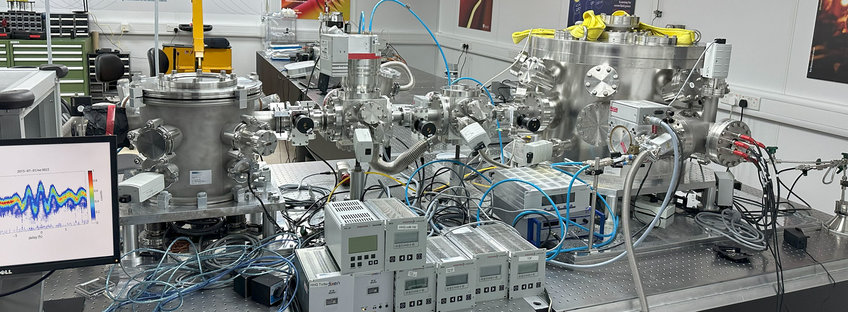
Attosecond physics in atoms and molecules
In 2015, King Saud University (KSU) has jointly established with Max Planck Institute of Quantum Optics (MPQ) and Ludwig-Maximilians-Universitaet Muenchen (LMU) the first Attosecond Science laboratory (ASL) at KSU in the Arab Gulf region and Arab countries. The ASL currently consists of two laboratories, one for the purpose of projects for basic and applied sciences and the other for the early detection of cancer using lasers (EDCL).
In the EDCL project ……
Our program aims to create the world most accurate early-detection liquid biopsy (blood) tests (sensitivity of >95%) for the early detection of multiple cancer types using the Fusion of Quantum Optics and Raman Laser Spectroscopy with Artificial Intelligence, introducing the innovative concept of Singularity in Medicine. Beyond the Proof of Concept (POC) in early detection of Breast and Colon cancers, we are working on the early detection of Pancreas, Gastric, Lung, Liver, Ovary and Prostate cancers (total of 16 trials). We believe we are in front of a potential rupture of innovation which could lead to a significant improvement in cancer cure rates, significant savings for the health care systems and could open perspectives in global industrial applications.
We aim to contribute to KSU recognition as the leading research facilities in the Kingdom and on the global scale in terms of early detection of cancer, and position KSU as reference leading university for the academic training of future scientists in Laser physics, Oncology and early Cancer Detection, Biomathematics modeling using Artificial Intelligence, Medical and pre-commercial applications…
Another project that is set to begin imminently focuses on the interaction between Melanin molecules and high energy photon. In this study, we plan to implement the pump probe transient absorption technique with a wide range spectrum from UV to near IR. This should provide us with the necessary information about depletion, absorption, and stimulated emissions between the ground and excited states. This could be achieved by studying the decay time, amplitude, and phase shift of the transient absorption. Furthermore, we plan to study the resistance, durability and robustness of regular melanin, and metal fortified melanin (strong binding) composites. State-of-the-art short pulse laser spectroscopy available in the ASL at KSU will be used to study the properties of these materials, including their ability to avoid damage during irradiation and their high ability to convert electromagnetic radiation into phonons via a proton-mediated process.
An equally intriguing project in the realm of medical application focuses on advancing magnetic field sampling. In this project we anticipate that magnetic field sampling can significantly advance current magnetic diagnostics, such as magnetic resonance imaging (MRI). In this project, we will explore the generation and sampling of ultra-strong and ultrashort magnetic fields in molecular spectroscopy and imaging for medical application.